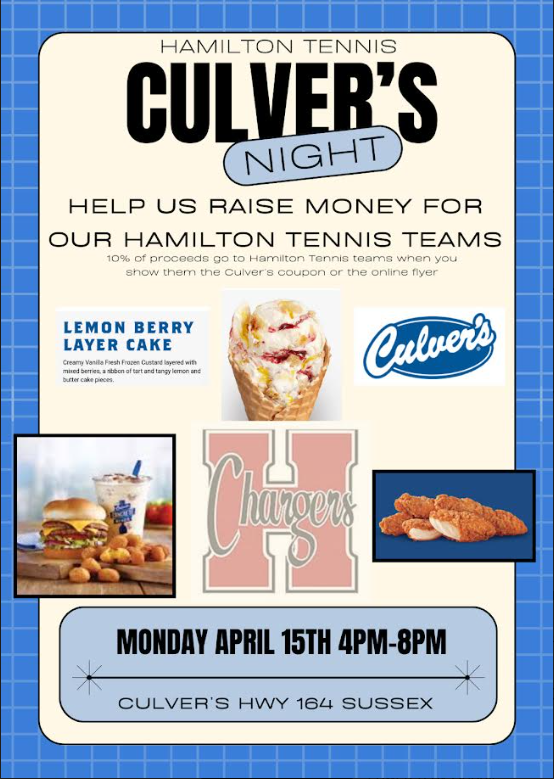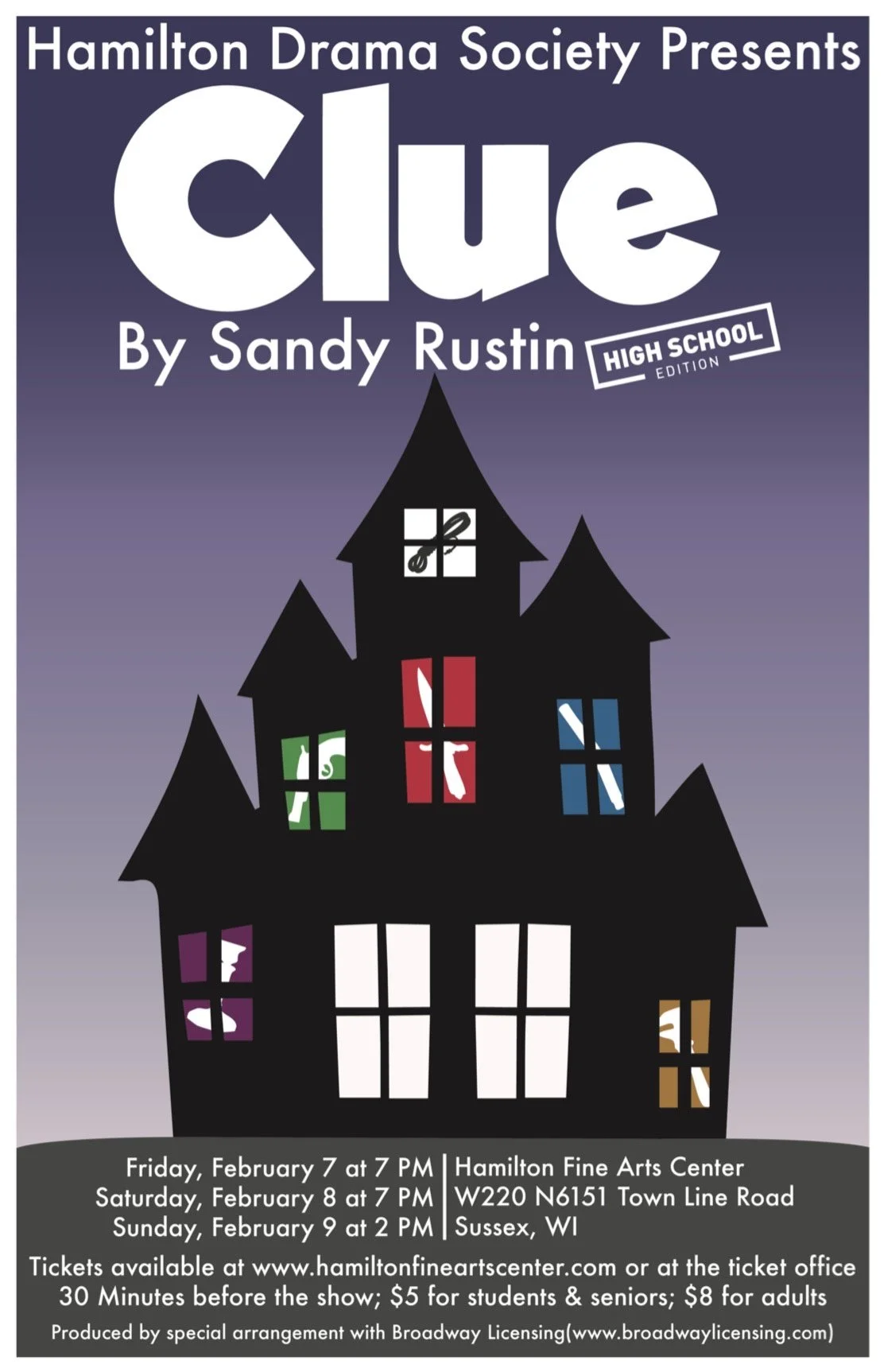Hamilton Forensics Spotlight: Moments in History
Photo from Hamilton Forensics.
Caroline Aron
The following piece is Caroline Aron’s Hamilton Forensics competition piece in the category of Moments in History, which is an original informative speech category (maximum 6 minute presentation) on a specific time period. This competition year, students had the choice of 1970-1979 and/or 1900-1919.
This year, Aron earned sixth place at State out of 65 competitors in Moments in History. She had a competitive season, participating in five tournaments and earning first place at two of them, including the Conference meet. For more information on Hamilton Forensics, check out their website!
Moments in History
“We stood near the entrance, his arms around my waist. We were two people in a sea of thousands waiting to enter a sold-out concert by one of the world’s biggest bands. Then the crowd pushed forward. It was so strong, it just tore us apart. My husband went one way, and I went the other. We were fighting for our lives. When the crowd was mostly gone, I saw others trying to pick themselves up and the first responders rushing to them. I looked eagerly for my husband on what was just supposed to be a fun night out. Authorities were pronouncing him dead.”
-Tammy Adams
With the concert starting at 8:00 pm on December 3rd, 1979, over 8,000 people had gathered outside the Cincinnati Riverfront Coliseum. Fans tried to escape the frigid air coming off the nearby Ohio River while waiting for doors to open to see The Who, one of the major bands of the rock & roll British invasion. Little did they all know, 11 of the concert go-ers would not live to see the performance that night when a crowd surge turned deadly.
Fans had started to gather at the Coliseum around noon, and by 3:00 pm, police had been called in to maintain order as the crowd swelled into the thousands. Concert go-ers were packed so tightly together that viewers of the crowd described the mob like a fluid mass.
At around 7:00 pm, a police lieutenant noted how many people were pressing forward to get close to the soon-to-be-open doors. When he approached the promoters with the solution of readying more entrances than just the two doors they wanted to open to better distribute the crowd, he was told that not enough ticket takers were working to enable them to open more sets of doors.
At about 7:15, the two doors, each twenty inches wide to usher in more than 8,000 anxious fans, opened. People pushed and shoved to get their way in. Fans were knocked to the ground, with others falling on top of them. While loads of people were trying to flood in, the enticing sound of rock and roll music came beaconing out. It was just a soundcheck, as the band had arrived late and was running behind schedule. But no one outside knew that. Fans were getting worried, thinking that they were missing the concert.
At approximately 7:20, the final surge ensued. The crowd powerfully pressed forward as one set of glass doors finally shattered and the others were thrown open. Concertgoers were shoved up against one another, some lifted off their feet and out of their shoes. Crammed together, everyone struggled to breathe. Fans were climbing up on other people’s shoulders, walking over others to get to the doors. Some went berserk and just started swinging their arms. People realized that if they fell, no amount of kicking or screaming would save their lives. The crowd, as mindless as a tsunami, would swallow them, crush them, and wouldn’t recede until everyone was inside the venue.
The horror went on for the next 15 minutes. At approximately 7:45 pm, Security began to work their way into the crowd where the 11 trampled bodies were revealed on the ground. The husband of Tammy Adams, whose account I stated in my intro, was one of the victims. He was only 21, when the crowd took his life. In fact all of the victims were aged 15 to 27 years old. They suffered multiple bruises, and “there was some evidence of footprint-like injuries,” but they ultimately died from asphyxiation.
Back at the Coliseum, officials told the concert promoters to go on with the show because they feared riling up the crowd again. The Who played for hours and wouldn't even learn of the tragedy until after their final encore.
District One police, meanwhile, sought to discourage worried parents from going to the venue, whose entrance was submerged in broken glass, hats, coats, wallets…and thousands of bloody footprints. One officer was overheard telling a parent to just wait up and see if their kid comes home. There’s nothing they could do.
The public blamed disaster on a lot of things: rock-and-roll, drug use or even the victims themselves, but the task force ultimately faulted poor venue management and the Riverfront Coliseum’s “festival seating”, meaning unreserved seats were available to the first people to claim them, which can be a recipe for disaster. Many concert venues around the nation eliminated the controversial practice by 1979, but the Riverfront still continued “festival seating” for the sole reason that it made money. As it seemed that they cared more about their bottom line, than the safety of their concert-goers.
The tragedy of the Who Concert Disaster brought to light many problems with crowd control. Even with how much we have advanced in this category, crowd control is still a problem in our society today with how unpredictable crowds can be. The 2021 Travis Scott Astroworld tragedy that similarly took the lives of 10 people proves that these mortifying events and lives being taken are bound to continue if the issue with crowd control is not assessed and fixed. Overall, the Who Concert Disaster will never be forgotten by the rock and roll community in remembrance of the lives that were taken that day, and how one of the biggest concert disasters in history could have been prevented.
Sources
Crowd surge at a Who concert killed 11 people in 1979: 'It was so strong, it just tore us apart'
They Survived the Who Concert from ‘Hell.’ Now, They Finally Have Closure
Astroworld brings memories of the Who concert stampede that left 11 people dead 40 years ago.
The Who Concert Disaster Explained
The Who concert 40 years later: Survivors and victims' families relive tragic night in Cincinnati






